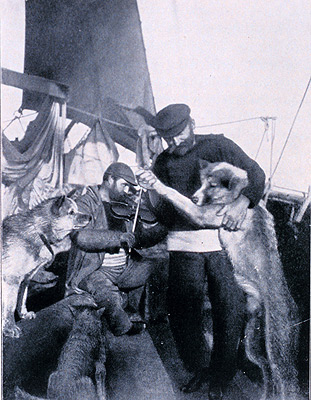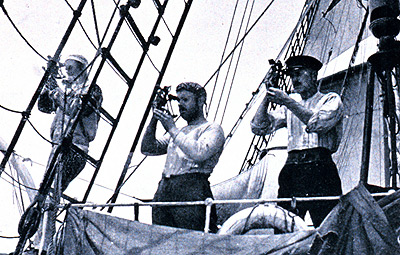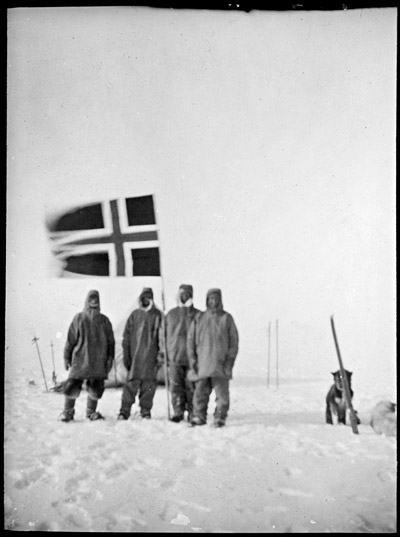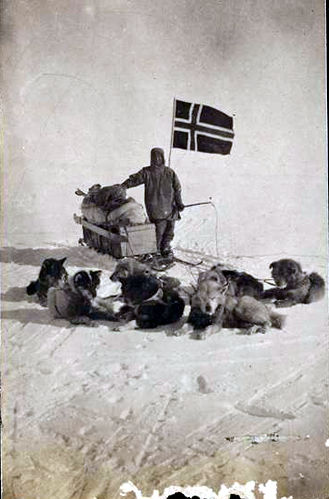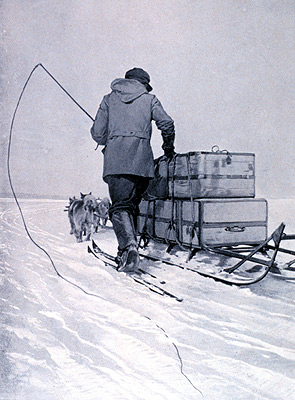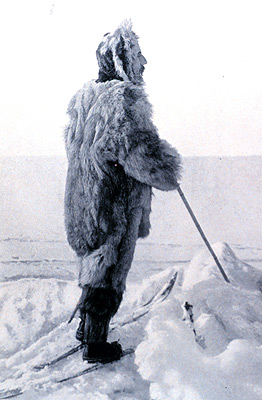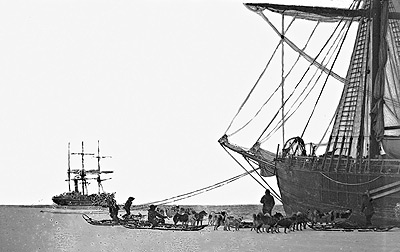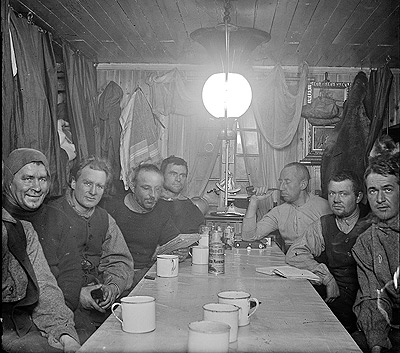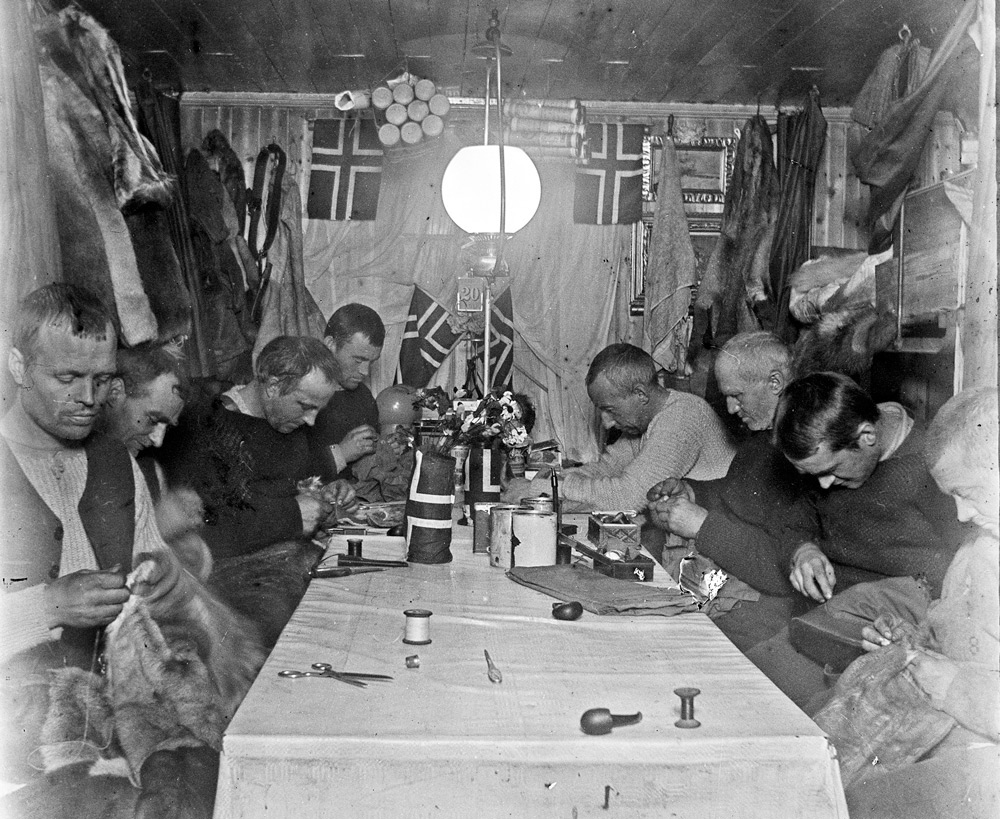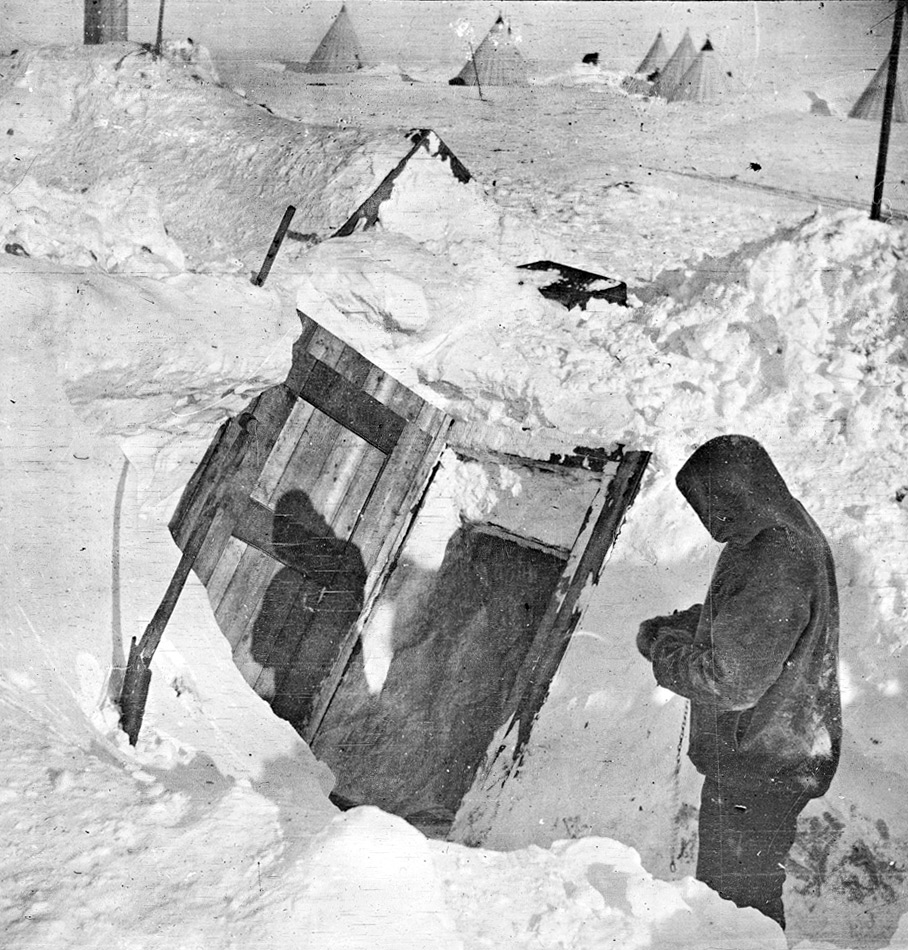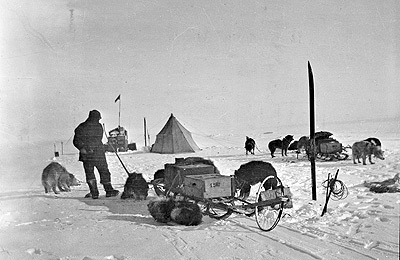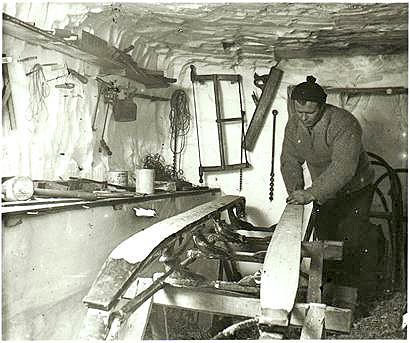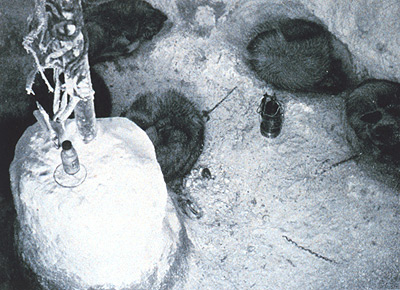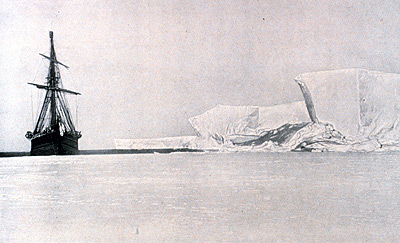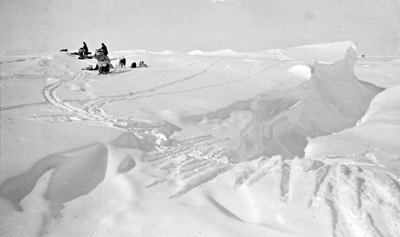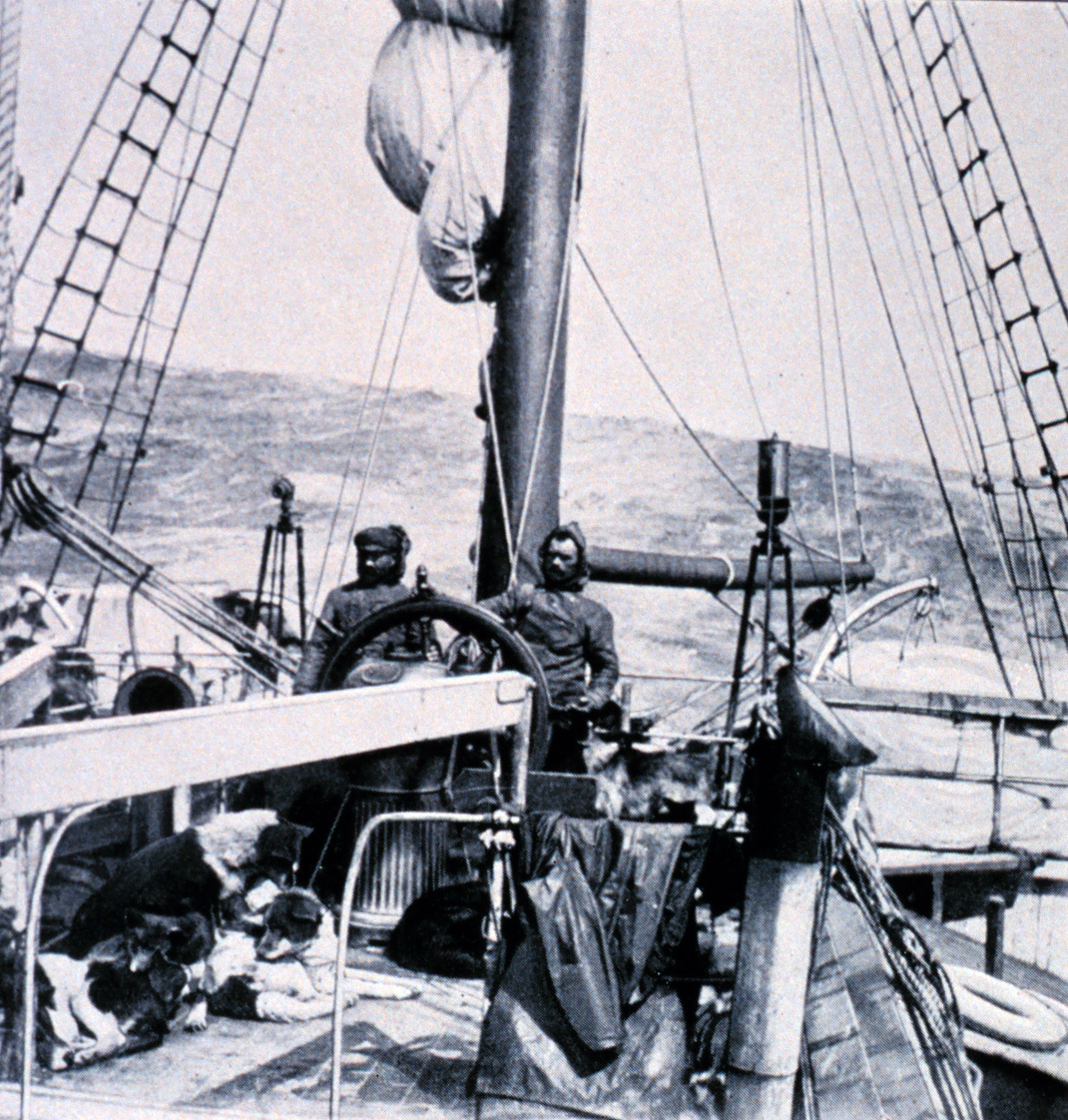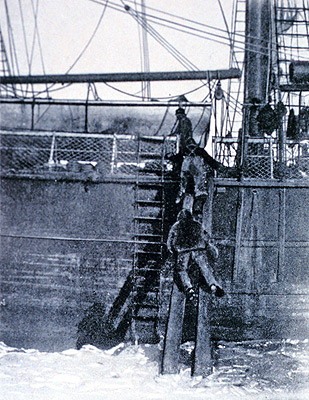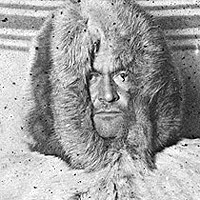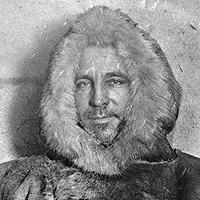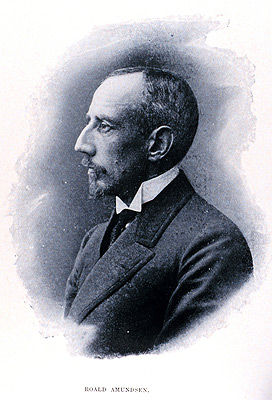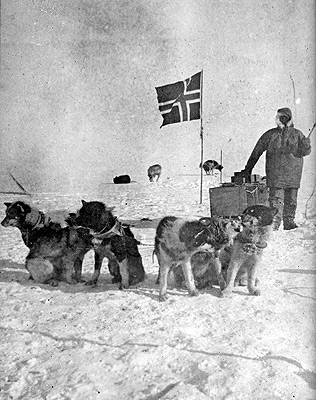
Roald Amundsen
Pictures from the South Polar Expedition
1911
Norwegian Roald Amundsen was the leader of the first team to successfully reach the South Pole. Famously arriving five weeks before Scott and his party. Amundsen used dog sleds, his party was well organised and well prepared with the only intention being to reach the pole, rather than any other exploration or discovery.
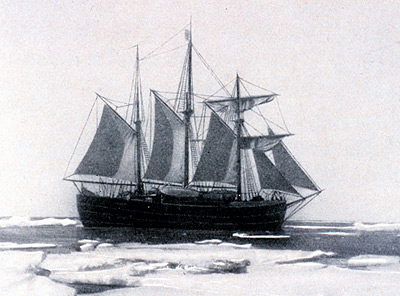
The Fram under sail
The Fram was lent to Amundsen by Fritjof Nansen for his attempt on the South Pole (originally to be the North Pole). Prior to the Titanic it was the most famous ship in the world, built specifically for polar exploration and designed to ride up in ice pressure rather than be crushed by it.
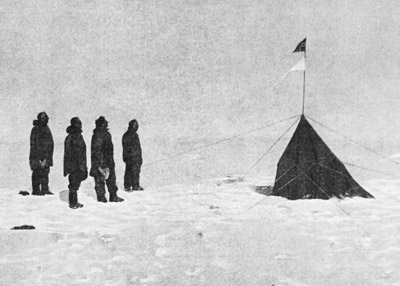
Amundsen and his party at the South Pole, 14th December 1911, Friday, about 3 p.m.
The first men to the South Pole - Roald Amundsen, Olav Olavson Bjaaland, Hilmer Hanssen, Sverre H. Hassel and Oscar Wisting. The first men at the South Pole commemorate the occasion by erecting a tent with their national (Norwegian) flag flying. They leave in the tent a letter and a few supplies for Captain Scott and his party. Lightweight for the time, the tent was canvas with bamboo poles to keep it erect.
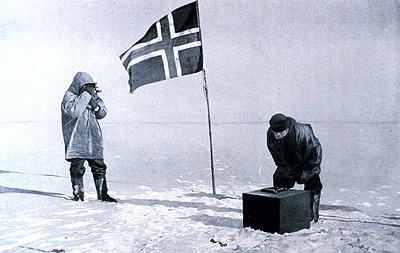
Taking an observation at the pole
One problem that arriving at the South Pole posed was determining exactly where it was. The pole itself is on a featureless icy plateau. The ice above it is moving continually but slowly. Only by very careful repeated navigational readings could Amundsen's team actually determine that they had arrived. Thus they established that this flat white bit was the pole as opposed to that other flat white bit, they passed over half an hour ago.
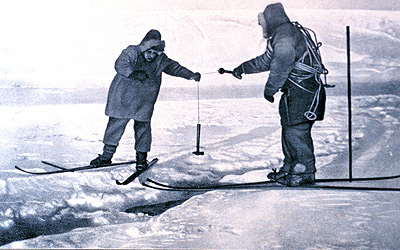
Improvised sounding tackle
Using a hammer with line attached to sound through the sea ice. Sounding in this instance means determining the depth of the sea at this point.
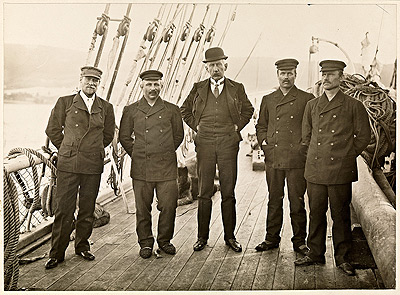
The South Pole party safely back aboard the Fram
left to right: Sverre H. Hassel, Oscar Wisting, Roald Amundsen (centre with bowler hat) Olav Olavson Bjaaland, and Hilmer Hanssen Unknown to this victorious team at this time, no similar photograph would be able to be taken of Scott's South Polar party.
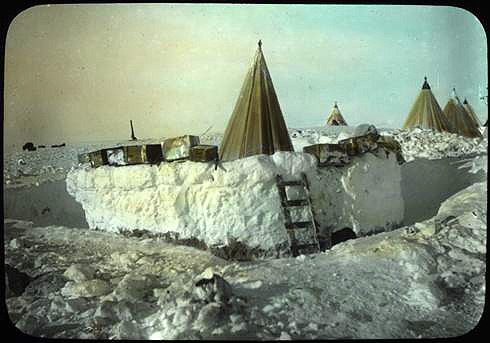
Meat tent at Framheim
Fresh seal meat was stored in the tent, the snow wall was built to keep the dogs out. Other tents with dried fish for dog food were open but didn't require measures to keep the dogs out. There were 14 tents around the main hut at Framheim . Other tents were used to house the dogs or storage of provisions.
Another reason for Amundsen's success was the use of fur clothing based on that used by the Inuit of the north, here demonstrated by two of his team.
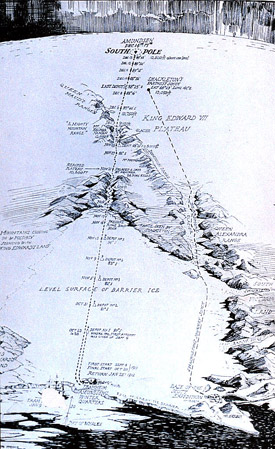
Approximate bird's eye view, drawn from the first telegraphic account of Roald Amundsen's South Pole expedition
Route map showing the routes of Shackleton and Amundsen in the quest for the Pole. Amundsen's team set off from their ship, the Fram where the winter base was named "Framheim". Also shown is the position of Scott's expedition and the route taken by Shackleton in 1908 - 1909 who were at the point the team that had reached the furthest point south. There is no route shown for Scott's team as it was not known at the point when Amundsen's team set off, Scott and his men set off later. The area labeled "Level Surface of Barrier Ice" is now known as the Ross Ice Shelf.
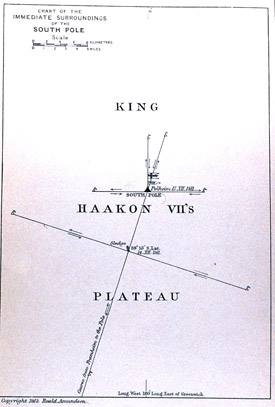
Chart of the immediate surroundings of the South Pole
I like the title of this map, because when you look at it closely, there's nothing there at all apart from the South Pole. The only features on the map are of where there were measurements taken by Amundsen's team to determine their exact position. Only by moving away from the pole and taking sightings was it possible to accurately establish the position and so prove that the pole had been reached. The pole is on a plateau about 10,500 ft above sea level, which was named Haakon VII's Plateau after the then king of Norway.

